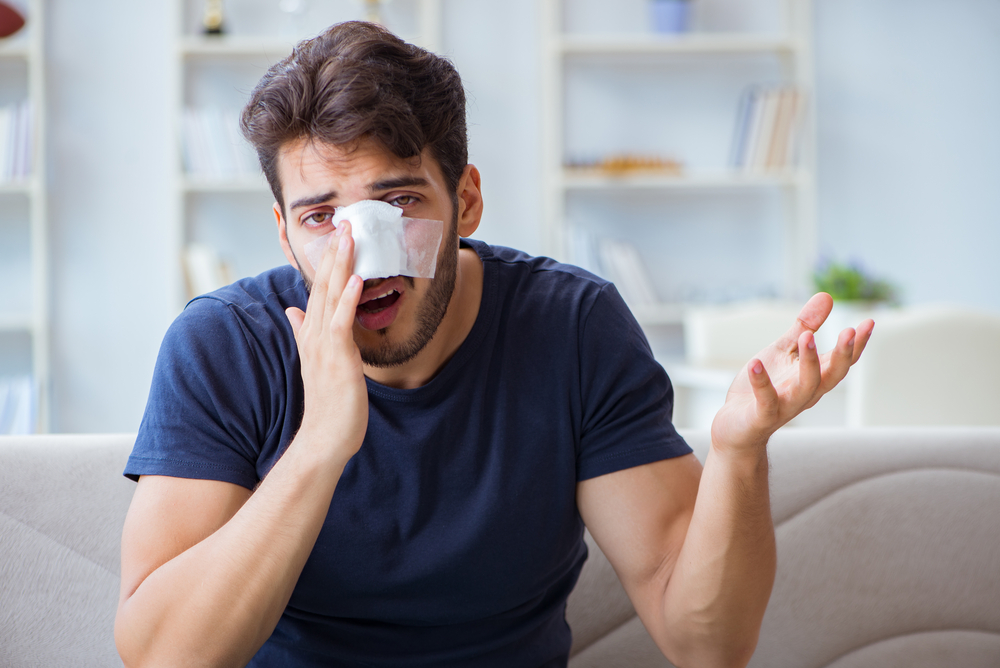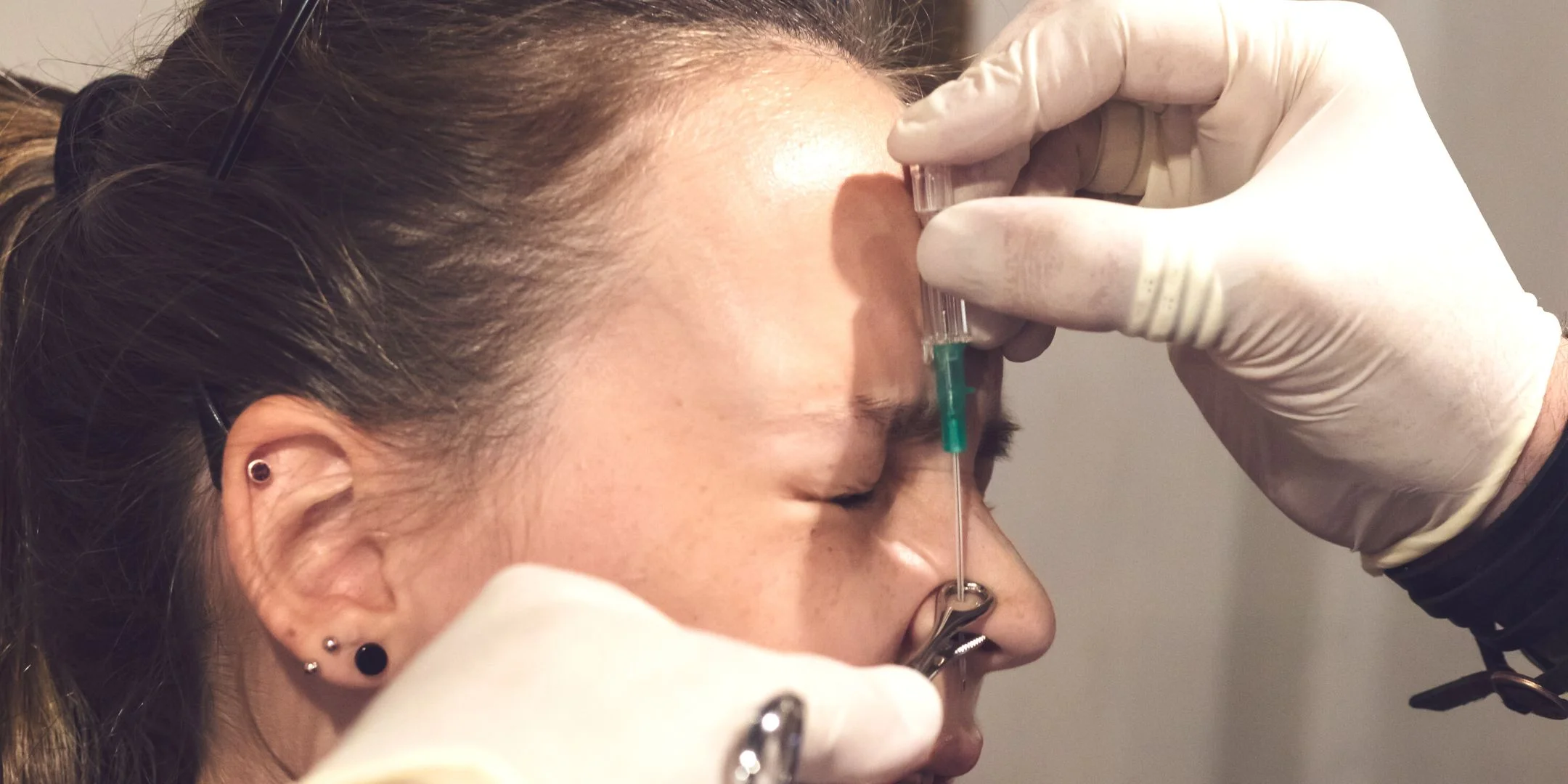- A buffalo hump is not a serious or life-threatening condition.
- It often occurs alongside Cushing’s syndrome, but can also be caused by obesity or as a side effect of taking certain prescription medications.
- Most plastic surgeons recommend liposuction for treating buffalo humps, but there are some revolutionary new treatments coming onto the scene.
- Several liposuction methods are recommended for buffalo hump removal.
If you’ve got extra fat that appears to bulge up behind the neck and shoulders, you may have what’s known as a buffalo hump. What is a buffalo hump, you ask? It’s simply the buildup of extra fat along the back and upper neck, creating the appearance of a protruding hump. This fatty protrusion can be caused by an underlying health condition or obesity, and seriously compromise one’s self-esteem.
In general, the condition is not considered serious and typically doesn’t affect a person’s overall health. Still, this unsightly and frustrating cosmetic issue can totally change your demeanor and lead to lifelong self-esteem issues. Not only that, but in addition to the embarrassing disfigurement, a buffalo hump can also compromise your range of motion and limit neck movements.
The condition gets its animal nickname name because it causes a prominent bump similar to that found on the upper back of a buffalo. The official medical term for the buffalo hump is a dorsocervical fat pad. Fortunately, buffalo hump removal is possible with plastic surgery. Various liposuction techniques are recommended for removing the fat that accumulates around the upper part of the back and neck.
What Causes A Buffalo Hump?
One common reason people develop a hump behind the shoulders is Cushing’s syndrome. This syndrome causes the body to produce too much of the hormone cortisol, which is vital when processing proteins, carbohydrates and fats. Those who suffer from Cushing’s syndrome are more likely to gain weight all over the body, plus it can cause body weight to be redistributed to areas such as the back of the neck and shoulders. This hormonal imbalance causes the hump to fluctuate in size over time.
Obesity and rapid weight gain can cause the body’s fatty tissue to collect in areas on the back. Additionally, buffalo humps sometimes develop as a side effect of certain prescription medications (including medicines used to treat AIDS), as well as long-term steroid use, including prednisone. Osteoporosis, a medical condition that causes the bones to thin, can also cause the spine to curve, leading to a hump-like shape. HIV patients with lipodystrophy, the loss or buildup of fat associated with HIV, are also likely to develop a buffalo hump.
Buffalo Hump Removal Via Liposuction
Cosmetic surgery is a good option for anyone who has tried diet and exercise with minimal results. Typically, a plastic surgeon will recommend liposuction in order to completely remove these stubborn fat deposits and smooth out the protruding area in the posterior neck. Don’t let the idea of liposuction scare you: an experienced plastic surgeon will be able to safely perform this surgical fat removal procedure on an outpatient basis with relatively minimal pain.
To do this various types of liposuction are used to remove pockets of fat from the upper neck. Although the different methods have their own sets of pros and cons, each one is similar in that it uses specialized tools to vacuum fat out from beneath the skin’s surface to reduce the appearance of fullness. Doctors typically use a liposuction cannula (a thin, hollow tube) to loosen and remove excess fat. Talk to your doctor about your medical history and expectations before committing to a particular liposuction procedure.
Tumescent Liposuction
There is a wide range of surgical techniques used to address the buffalo hump, with the most common being tumescent liposuction. This procedure is particularly ideal because it can be performed under local anesthesia and is generally considered one of the safer liposuction options, since it helps minimize blood loss and other risks commonly associated with general anesthesia. It’s similar in terms of cost and procedure to other forms of liposuction, but generally considered safer.
During tumescent liposuction, a doctor will inject large volumes of epinephrine, a drug that shrinks capillaries, into the fat cells before the removal of excess fat. This helps to minimize blood loss, making the procedure safer. Those who undergo this type of buffalo hump surgery will experience a more manageable recovery time and fewer overall side effects. The epinephrine injections help to keep pain, bruising and swelling to a minimum due to their ability to lower the amount of blood lost during the procedure.
Ultrasonic- Or Laser-Assisted Liposuction
Ultrasonic liposuction, or ultrasonic-assisted liposuction (UAL), like VASER®, is similar to tumescent liposuction, but uses high-pitched sound waves (ultrasonic energy) to liquefy fat before removal. The benefit of this procedure is that it makes fat removal easier in hard-to-reach and dense places, and also helps prevent the fatty tissue from returning over time. After the fatty tissue is liquefied during the procedure, a surgeon will then vacuum out the fluids.
Doctors have had particular success with this type of liposuction when treating HIV patients who have developed lipodystrophy. The patients who saw the most positive treatment results were required to wear compression garments to maintain pressure on the treated area for two weeks following the procedure. You will be required to minimize physical activity for up to two weeks after UAL. Some potential risks include burns and the development of seromas.
Laser-assisted liposuction (Smartlipo, ProLipo Plus, SlimLipo and others) is another technique that can be used to remove or shrink a buffalo hump. This procedure is very similar to UAL, but instead of using ultrasonic energy to “melt” fat, it uses lasers. Both laser liposuction and ultrasonic-assisted liposuction typically only require local anesthesia, which makes the recovery time much more manageable.
Cost Of Buffalo Hump Removal
The cost of the procedure varies widely based upon which type of liposuction is used, how much fat must be extracted, and the area where you live. In general, liposuction costs more in larger treatment areas like the abdomen or upper neck. Depending on the method, liposuction can cost anywhere from $3,000 to $6,000, with some extreme cases costing patients over $10,000.
Unfortunately, most buffalo hump removal procedures are not covered by insurance, but if you can make a strong case that the condition inhibits you from normal physical activity, you may be able to persuade your insurance company to incur some of the costs. Make sure that you seek medical advice only from a board-certified plastic surgeon when exploring your buffalo hump treatment options.
Am I A Good Candidate?
One of the primary downfalls of liposuction is that it’s not the best choice for people who are obese. The American Society of Plastic Surgeons (ASPS) says that liposuction candidates should be in good overall health and within 30 percent of their ideal body weight. In other words, liposuction is a good option for those who are in a healthy weight range and have developed a hump due to another underlying condition or from taking prescription medications.
Good candidates for liposuction should be non-smokers. Another hurdle is that patients should be relatively healthy, with no medical conditions that could potentially impair healing. Luckily, newer forms of liposuction that only rely on local anesthesia (and are therefore less risky) are safer for those who have serious health issues. Those who have liposuction should also have a good amount of firm, elastic skin and muscle tone near the treatment area.
Non-Surgical Options
There are also a few treatment options available for people who fear going under the knife. Some studies have shown that the administration of a certain human growth hormone will decrease the size of a buffalo hump. With that being said, almost all of the patients in these studies experienced regrowth of the hump after a period of time, while side effects like carpal tunnel syndrome, dysglycemia (impaired glucose tolerance) and neuropathy made taking these medications difficult for many of them.
Recently, doctors have been conducting tests on patients using intralipotherapy (Aqualyx®). This procedure is essentially a fat-busting injection where substances are injected into the fatty tissues to eliminate the bulge inside the hump. This procedure is already being touted as the “gold standard” in non-surgical treatment of the buffalo hump for HIV+ patients, but more clinical trials are needed to fully assess safety and efficacy.
In some cases, doctors will recommend treating the underlying medical condition in order to reduce the size of the buffalo hump. For example, patients who have developed a buffalo hump as a side effect of HIV have often seen a decrease in the size of the protrusion after undergoing antiviral therapy. Those with Cushing’s syndrome have seen improvements with treatment plans that lower the body’s high levels of cortisol.
Non-surgical fat removal options, such as Kybella and CoolSculpting, may also be an option for some people. Kybella is a product injected into an area of excess fat, causing it to dissolve It generally requires multiple treatments and is currently the only FDA approved method to treat fat located directly under the chin.
Coolsculpting is a procedure which freezes the fat, causing it to disintegrate over time. Like Kybella, Coolsculpting also requires multiple treatments to be effective. Furthermore, the excess fat present in a buffalo hump would have to be able to fit within a coolsculpting suction head for any results to be noticeable.
These procedures are particularly ideal for buffalo humps that require more sculpting than fat removal, such as instances when fat is still present after fat removal surgery. Because the fat at the back of the neck is often more fibrous than fat in the love handles, tummy, and other parts of the body, it typically takes multiple sessions to achieve the desired result. Make sure to speak with a medical professional to ensure these treatments are appropriate for your situation.









